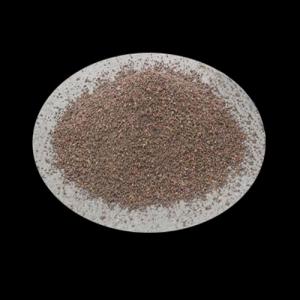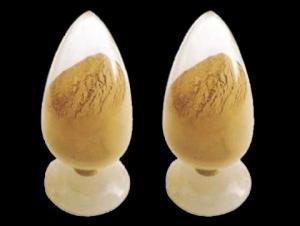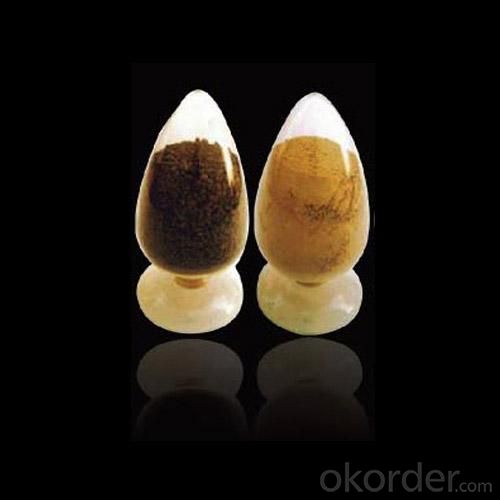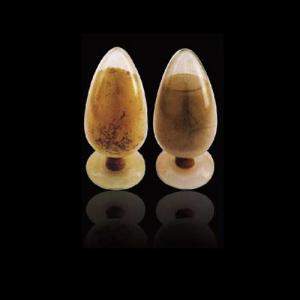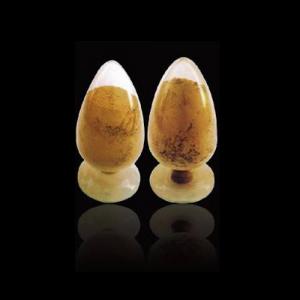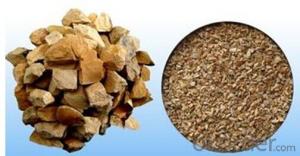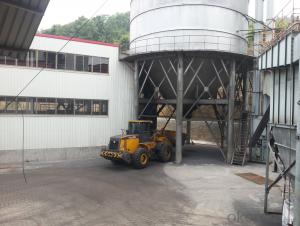Tap Hole Fillers for EAF
- Loading Port:
- China Main Port
- Payment Terms:
- TT or L/C
- Min Order Qty:
- 2 MT m.t.
- Supply Capability:
- 5000 Tons Per Month m.t./month
OKorder Service Pledge
OKorder Financial Service
You Might Also Like
General Information of Tap Hole Fillers for EAF
Made as per international standards, ALRE tap hole fillers for EAF is known for its excellent corrosion and scouring resistance of iron steel, long operating life and easy execution and mending. Further, these can be provided in different specifications as required by the clients.
Technical data of Tap Hole Fillers for EAF
Item | Tap Hole Fillers | |
Al2O3(%)≥ | — | |
MgO(%)≥ | 50 | |
CaO(%)≤ | — | |
SiO2(%)≤ | 35~40 | |
Fe2O3(%)≥ | — | |
Cr2O3 | — | |
Bulk Density (g/cm3)≥ | 110℃×24h | — |
1600℃×3h | — | |
C.C.S. (MPa)≥ | 110℃×24h | — |
1600℃×3h | — | |
M.O.R.(MPa)≥ | 110℃×24h | — |
1600℃×3h | — | |
Grain Size Distribution (%) | >6mm≤10 | |
Heavy Burn Line Rate(1300℃×3h)(%) | — | |
Production line and Test Room of Tap Hole Fillers for EAF
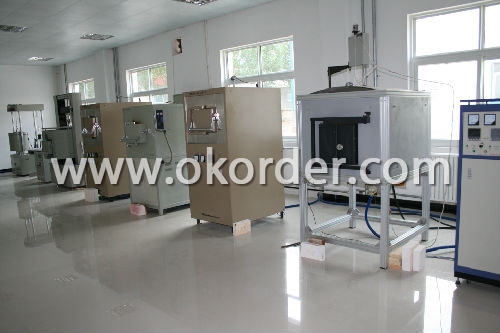
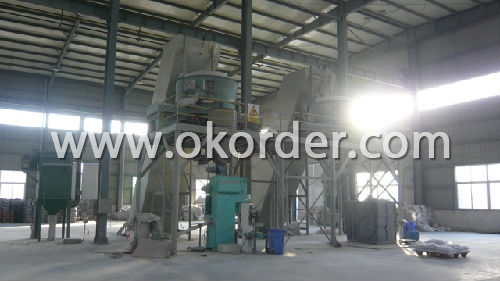
Feature of Tap Hole Fillers for EAF
Long operating life
Easy execution and mending
Excellent corrosion and scouring resistance of iron steel
Application of Tap Hole Fillers for EAF
ALRE tap hole fillers for EAF can be used widely to fill the tap hole of EBT.
- Q: What is the role of monolithic refractories in blast furnaces?
- Monolithic refractories have a crucial function in blast furnaces, as they offer high-temperature resistance and excellent durability in the furnace's harsh operating conditions. Blast furnaces are utilized in the ironmaking process to transform iron ore into molten iron, and monolithic refractories are essential for lining the furnace's interior. Withstanding extreme temperatures is one of the main purposes of monolithic refractories in blast furnaces. The furnace's interior can reach temperatures as high as 2,500 degrees Celsius, and monolithic refractories are specifically designed to preserve their structural integrity and shield the furnace lining from thermal shock and erosion caused by these high temperatures. Monolithic refractories also provide insulation, preventing heat loss from the furnace. This is significant as it helps to maintain the desired temperature for efficient iron production. By minimizing heat loss, monolithic refractories contribute to energy conservation and improved overall furnace performance. Another critical role of monolithic refractories is to resist chemical attack from the molten iron and slag. The materials employed in blast furnaces, such as iron ore, coke, and limestone, undergo various chemical reactions during the ironmaking process. Monolithic refractories are engineered to withstand the corrosive effects of these reactions, ensuring a longer lifespan for the furnace lining. Furthermore, monolithic refractories offer exceptional mechanical strength and resistance to abrasion. The materials processed in a blast furnace, including iron ore and coke, can be abrasive. Monolithic refractories act as a protective barrier against this abrasive action, preventing damage to the furnace lining and extending its lifespan. In conclusion, the role of monolithic refractories in blast furnaces is to endure extreme temperatures, provide insulation, resist chemical attack, and offer mechanical strength against abrasion. These properties contribute to the efficient operation and longevity of blast furnaces, enabling the production of molten iron for various industrial applications.
- Q: How do monolithic refractories resist high temperatures?
- Monolithic refractories resist high temperatures due to their unique composition and structure. These refractories are made from a single material or a blend of materials, such as alumina, silica, and magnesia, which have high melting points and can withstand extreme heat. Additionally, their monolithic nature eliminates joints and seams, reducing the risk of thermal shock and allowing them to adapt to thermal expansion and contraction. Their dense and compact structure also minimizes porosity, preventing the penetration of heat and ensuring their durability under high-temperature conditions.
- Q: What are the key properties of monolithic refractories?
- Monolithic refractories, which lack a definite form like bricks or tiles, are a type of refractory material. They are typically composed of a mixture of aggregates, binders, and additives that can be easily molded and installed in various industrial applications. The main characteristics of monolithic refractories include: 1. Exceptional heat resistance: Designed to endure extremely high temperatures, monolithic refractories are suitable for industries such as steel, cement, glass, and petrochemicals. They can maintain their strength and structural integrity even at temperatures exceeding 3000 degrees Fahrenheit. 2. Ability to withstand thermal shock: Monolithic refractories possess the capacity to resist sudden temperature changes, which can cause cracking or damage to the refractory. This property is crucial in environments where rapid heating or cooling occurs, such as furnaces or kilns. 3. Resistance to chemical attack: Monolithic refractories display excellent resistance to corrosion from molten metals, slag, gases, and other harsh substances. This makes them ideal for environments where contact with acidic or alkaline materials is common. 4. Low porosity: Monolithic refractories have low porosity, meaning they have a high density and are less permeable to gases and liquids. This property ensures that molten metals or corrosive substances cannot easily penetrate the refractory, contributing to its longevity and performance. 5. Easy installation and repair: Unlike traditional refractory materials like bricks, monolithic refractories can be easily molded and installed in various shapes and sizes. They can be applied using techniques such as spraying, casting, or ramming, allowing for faster installation and reduced downtime. Additionally, if any damage occurs, they can be easily repaired or patched. 6. Strong mechanical strength: Monolithic refractories possess sufficient mechanical strength to endure the stresses and pressures encountered during their service life. This guarantees their structural integrity, even under high load conditions. Overall, the versatile and reliable properties of monolithic refractories make them an excellent choice for a wide range of industrial applications that require resistance to high temperatures, chemicals, and thermal shock.
- Q: How do monolithic refractories resist thermal shock in the iron and steel industry?
- Monolithic refractories are specifically designed to resist thermal shock in the iron and steel industry. This is primarily achieved through their unique composition and structure. Firstly, monolithic refractories are made from high-quality raw materials, such as alumina, magnesia, and silica, which have excellent thermal properties. These materials are carefully selected to provide a high melting point, low thermal conductivity, and good thermal expansion characteristics. Secondly, the manufacturing process of monolithic refractories involves precise control of the grain size distribution and the addition of bonding agents. This results in a dense and homogeneous structure, which enhances their resistance to thermal shock. The bonding agents also play a crucial role in enhancing the refractory's strength and integrity. Additionally, monolithic refractories are often formulated with additives that provide increased resistance to thermal shock. These additives can include zirconia, silicon carbide, or graphite, which improve the refractory's ability to withstand rapid temperature changes. Moreover, monolithic refractories are designed to have low porosity, reducing the penetration of molten metal or slag into the material. This helps to prevent the formation of cracks and spalling, which can occur due to thermal shock. Furthermore, monolithic refractories are often applied as a lining or coating on the surface of the furnace or other equipment. This allows them to form a protective barrier, reducing direct exposure to extreme temperatures and thermal cycling. Overall, the combination of high-quality raw materials, careful manufacturing processes, additives, low porosity, and proper application techniques make monolithic refractories highly resistant to thermal shock in the iron and steel industry. They can withstand rapid temperature changes, prevent cracks, and maintain their structural integrity, ensuring reliable and efficient operation of furnaces and other equipment in this demanding industry.
- Q: What are the advantages of using plastic refractories in the iron and steel industry?
- There are several advantages of using plastic refractories in the iron and steel industry. Firstly, plastic refractories have excellent thermal shock resistance, which means they can withstand rapid changes in temperature without cracking or breaking. This is crucial in the iron and steel industry where the materials are exposed to extreme heat during the manufacturing process. Secondly, plastic refractories have good workability and can be easily shaped and molded to fit various complex shapes and sizes of furnaces, ladles, and other equipment used in the industry. This makes them highly versatile and adaptable to different production requirements. Additionally, plastic refractories have excellent resistance to chemical attacks from molten metals and slags. They can withstand the corrosive nature of these materials and maintain their structural integrity, ensuring longer service life and reducing maintenance costs. Lastly, plastic refractories have good bonding properties, allowing them to adhere well to existing refractory linings. This helps to extend the lifespan of the overall refractory system and reduce the need for frequent repairs or replacements. Overall, the advantages of using plastic refractories in the iron and steel industry include thermal shock resistance, workability, chemical resistance, and good bonding properties, making them a preferred choice for lining and repairing furnaces and other equipment in this industry.
- Q: How do monolithic refractories enhance the performance of ladle and tundish covers?
- The performance of ladle and tundish covers is significantly improved by the utilization of monolithic refractories. There are several ways in which this enhancement is achieved. Primarily, monolithic refractories possess remarkable thermal insulation properties. The steelmaking process subjects ladles and tundishes to extreme temperatures. Through the use of monolithic refractories, the covers effectively trap and retain heat, preventing excessive heat loss. This insulation ability not only helps maintain the desired temperature of the molten steel but also reduces the energy consumption required for heating. Secondly, monolithic refractories demonstrate exceptional resistance to thermal shock. When ladles and tundishes are filled with molten steel, there is a rapid and drastic temperature change in the refractory lining. This sudden shift can cause cracking and spalling of the lining, jeopardizing its integrity. However, monolithic refractories possess high thermal shock resistance, enabling them to endure these abrupt temperature fluctuations without significant damage. This ensures the longevity and durability of the ladle and tundish covers. Additionally, monolithic refractories exhibit excellent corrosion resistance. The presence of molten steel and other corrosive substances in ladles and tundishes can erode the refractory lining over time. Nonetheless, monolithic refractories are specifically engineered to withstand these corrosive environments, shielding the covers from chemical attack and erosion. This corrosion resistance enhances the lifespan of the ladle and tundish covers, reducing the need for frequent replacements and associated downtime. Furthermore, monolithic refractories provide good mechanical strength and stability. Ladles and tundishes undergo various mechanical stresses, including the weight of the molten steel, thermal expansions, and vibrations. The use of monolithic refractories furnishes the necessary strength and stability to endure these mechanical forces, averting structural failures and maintaining the integrity of the covers. To summarize, monolithic refractories heighten the performance of ladle and tundish covers by providing exceptional thermal insulation, resistance to thermal shock and corrosion, and sufficient mechanical strength. These properties guarantee efficient steelmaking processes, diminish maintenance costs, and extend the lifespan of ladles and tundishes.
- Q: What are monolithic refractories and how are they used in the iron and steel industry?
- Monolithic refractories possess a unified and uninterrupted structure, distinguishing them as a distinct type of refractory material. Unlike traditional refractory bricks, which involve the firing of individual pieces in a kiln, monolithic refractories consist of a single, seamless mass. This characteristic grants them superior versatility in terms of shape and size, rendering them ideal for a plethora of iron and steel industry applications. The iron and steel industry widely employs monolithic refractories due to their exceptional thermal and mechanical properties. They find application in various areas, including the lining of furnaces, kilns, ladles, and tundishes. These refractories are engineered to endure extreme temperatures, chemical erosion, and mechanical strain, ensuring the continuous and efficient operation of the steelmaking process. One prominent utilization of monolithic refractories within the iron and steel industry pertains to the lining of blast furnaces. These furnaces are substantial, cylindrical structures utilized for the production of pig iron from iron ore. The lining of these furnaces encounters intense heat, chemical reactions, as well as the abrasive nature of iron ore and hot gases. Monolithic refractories, such as castables and gunning mixes, are employed to establish a robust lining that can withstand these harsh conditions. Another application involves the lining of ladles, which transport molten metal from the blast furnace to the steelmaking process. Monolithic refractories are used to line these ladles, protecting them from the corrosive impact of hot metal and slag. In this scenario, the ability to shape monolithic forms facilitates precise fitting and effortless installation. Monolithic refractories also play a crucial role in tundishes, vessels employed to evenly distribute molten metal into molds during continuous casting. The refractories utilized in tundishes must exhibit exceptional resistance to thermal shock and erosion to endure the high temperatures and abrasive nature of the molten metal. Monolithic refractories, such as ramming and patching mixes, are employed to mend and maintain the tundish lining. In summary, the iron and steel industry relies on monolithic refractories for their capacity to endure harsh conditions and provide enduring linings in various applications. By harnessing these advanced refractory materials, the industry can achieve heightened efficiency, reduced downtime, and enhanced productivity in the steelmaking process.
- Q: How do monolithic refractories withstand chemical attack from molten metals and slag?
- Due to their unique composition and structure, monolithic refractories exhibit high resistance to chemical attack from molten metals and slag. Unlike refractories with joints or seams, monolithic refractories are made from a single, solid piece, minimizing the chance of chemical penetration. The ability to withstand chemical attack is attributed to several factors. Firstly, monolithic refractories have a high melting point, which surpasses the temperature of the molten substances they encounter. This prevents them from melting or deforming upon contact with hot metals or slag. Additionally, the chemical resistance of monolithic refractories is enhanced by their formulation with materials that possess excellent resistance to chemicals. These materials, such as alumina, magnesia, and zirconia, form stable compounds and have a strong affinity for oxygen. Consequently, when exposed to molten substances, the refractories develop a protective oxide layer on their surface, effectively shielding them from chemical attack. Furthermore, the dense and compact structure of monolithic refractories plays a crucial role in their ability to resist chemical attack. The absence of joints and seams reduces the chances of molten metals and slag infiltrating the refractories and initiating chemical reactions. This dense structure also reduces the porosity of the material, making it less permeable to aggressive substances. Moreover, manufacturers often incorporate specialized additives, such as fibers, binders, and corrosion inhibitors, into monolithic refractories to further enhance their chemical resistance. These additives contribute to the refractories' ability to withstand chemical attack. In conclusion, monolithic refractories are designed to endure chemical attack from molten metals and slag through their high melting point, chemically resistant composition, dense structure, and specialized additives. These properties enable them to maintain their integrity and performance even in the most challenging environments, making them an ideal choice for applications involving high temperatures and corrosive substances.
- Q: What are the specific requirements of monolithic refractories for ladle transfer applications?
- To ensure the effectiveness and durability of monolithic refractories used in ladle transfer applications, specific requirements must be met. These requirements are crucial for maintaining the integrity of the ladle lining and preventing any issues during the transfer process. Firstly, it is essential for monolithic refractories designed for ladle transfer applications to possess excellent thermal shock resistance. Ladles undergo extreme temperature changes during the transfer process, and the refractories must be capable of withstanding rapid heating and cooling without developing cracks or spalling. This property serves to prevent any damage to the lining and preserves the structural integrity of the ladle. Secondly, ladle transfer applications necessitate monolithic refractories that exhibit high resistance to chemical attack. Ladles often come into contact with various molten metals and slag, which can possess corrosive properties. The refractories must be able to endure these corrosive environments and maintain their physical and chemical properties over time. Another crucial requirement is good mechanical strength. Ladles can experience significant mechanical stress during the transfer process, including impacts and vibrations. Therefore, the monolithic refractories must possess sufficient strength to resist these mechanical forces and prevent any cracking or failure within the lining. Furthermore, ladle transfer applications frequently involve the use of fluxes and additives, which can possess different physical properties. The refractories used must be compatible with these fluxes and additives to ensure proper performance and avoid any adverse reactions that could impact the lining of the ladle. Lastly, monolithic refractories designed for ladle transfer applications should exhibit low porosity. Low porosity helps to minimize the penetration of molten metal and slag into the refractory lining, thereby reducing the risk of erosion and extending the service life of the refractories. In summary, the specific requirements for monolithic refractories in ladle transfer applications include excellent thermal shock resistance, high resistance to chemical attack, good mechanical strength, compatibility with fluxes and additives, and low porosity. By meeting these requirements, the refractories can effectively endure the harsh conditions of ladle transfer and ensure the longevity and performance of the ladle lining.
- Q: What are the common challenges faced by monolithic refractories in the iron and steel industry?
- The iron and steel industry heavily relies on monolithic refractories, which have a vital role in various applications like lining furnaces, ladles, and tundishes. However, these materials encounter common challenges in this industry. Thermal shock is a major challenge. Monolithic refractories undergo extreme temperature changes, especially during start-up and shut-down phases. This rapid heating and cooling can cause thermal stress, leading to cracking and spalling. To combat this, refractory manufacturers create high-quality monolithic materials with enhanced thermal shock resistance. Corrosion is another significant challenge. The iron and steel industry exposes refractory linings to aggressive materials like molten metal, slag, and gases, which chemically attack them. This corrosion results in material degradation, erosion, and reduced service life. To address this, specialized monolithic refractories with excellent corrosion resistance are used, often containing additives that can withstand the corrosive environment. Abrasion is also a common challenge faced by monolithic refractories in this industry. The movement of raw materials, molten metal, and slag causes mechanical wear on the refractory lining, leading to material loss and compromised performance. Refractory manufacturers develop abrasion-resistant monolithic materials that can withstand intense wear and tear, ensuring extended service life. Moreover, good thermal conductivity is often required in the iron and steel industry. This is crucial for efficient heat transfer and maintaining optimal operating conditions. Achieving the right balance between thermal conductivity and mechanical strength can be challenging, as refractories with high thermal conductivity often have lower mechanical strength. Therefore, selecting the appropriate monolithic refractory with desired thermal conductivity properties is crucial for optimal performance. Lastly, installation and maintenance present challenges for monolithic refractories. The application of these refractories requires skilled personnel and careful installation techniques due to their liquid or semi-liquid nature. Additionally, regular maintenance and repairs are necessary to ensure the refractory lining's longevity and performance. Regular inspections, repairs, and proper curing techniques are vital to mitigate these challenges and optimize refractory performance. In conclusion, monolithic refractories in the iron and steel industry face challenges such as thermal shock, corrosion, abrasion, thermal conductivity, and installation/maintenance. Addressing these challenges through the development of specialized refractory materials and employing proper installation and maintenance techniques are crucial for ensuring efficient and reliable performance in this demanding industry.
1. Manufacturer Overview
| Location | Henan, China |
| Year Established | 2007 |
| Annual Output Value | Above US$ 200 Million |
| Main Markets | North America;Asia;Western Europe;Africa;Russia;Middle East |
| Company Certifications | ISO 9001:2008 |
2. Manufacturer Certificates
| a) Certification Name | |
| Range | |
| Reference | |
| Validity Period |
3. Manufacturer Capability
| a) Trade Capacity | |
| Nearest Port | Tianjin |
| Export Percentage | 20% - 30% |
| No.of Employees in Trade Department | 10-20 People |
| Language Spoken: | English; Chinese |
| b) Factory Information | |
| Factory Size: | Above 150,000 square meters |
| No. of Production Lines | Above 10 |
| Contract Manufacturing | Installation guide, OEM Service Offered |
| Product Price Range | High; Average |
Send your message to us
Tap Hole Fillers for EAF
- Loading Port:
- China Main Port
- Payment Terms:
- TT or L/C
- Min Order Qty:
- 2 MT m.t.
- Supply Capability:
- 5000 Tons Per Month m.t./month
OKorder Service Pledge
OKorder Financial Service
Similar products
Hot products
Hot Searches
Related keywords
